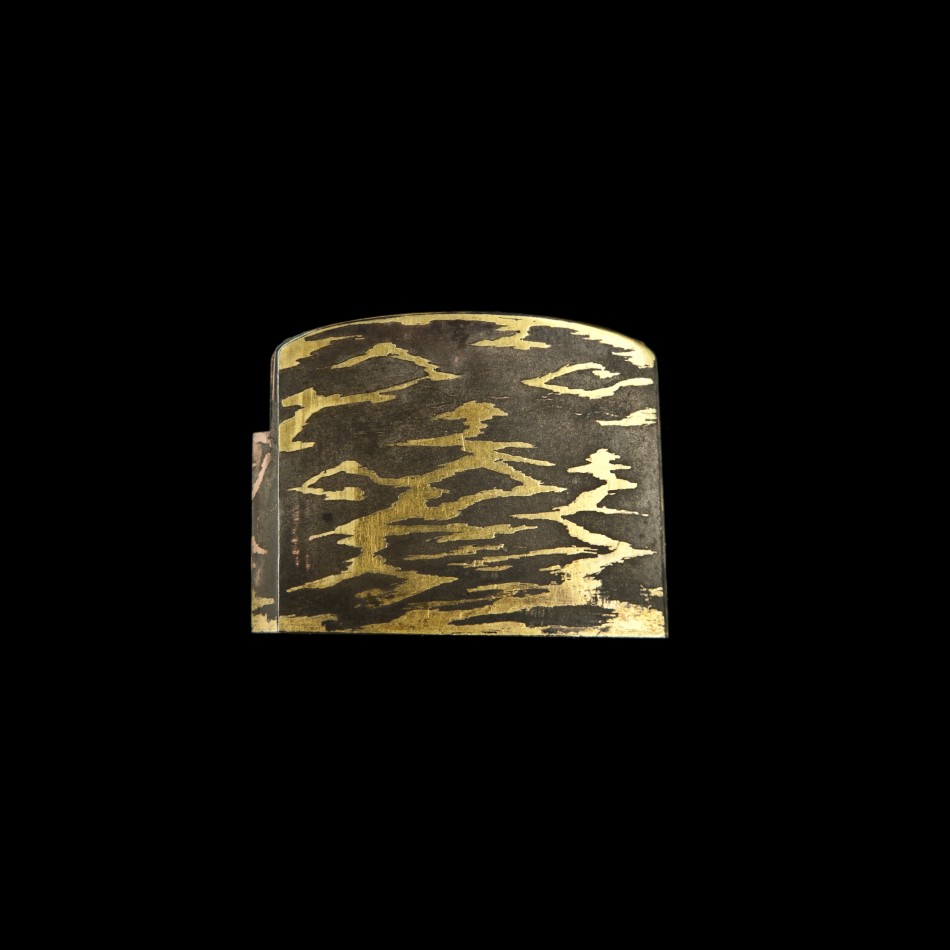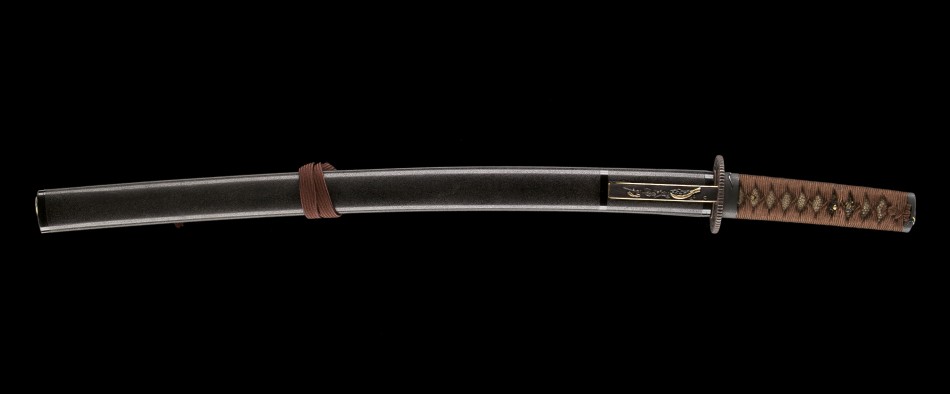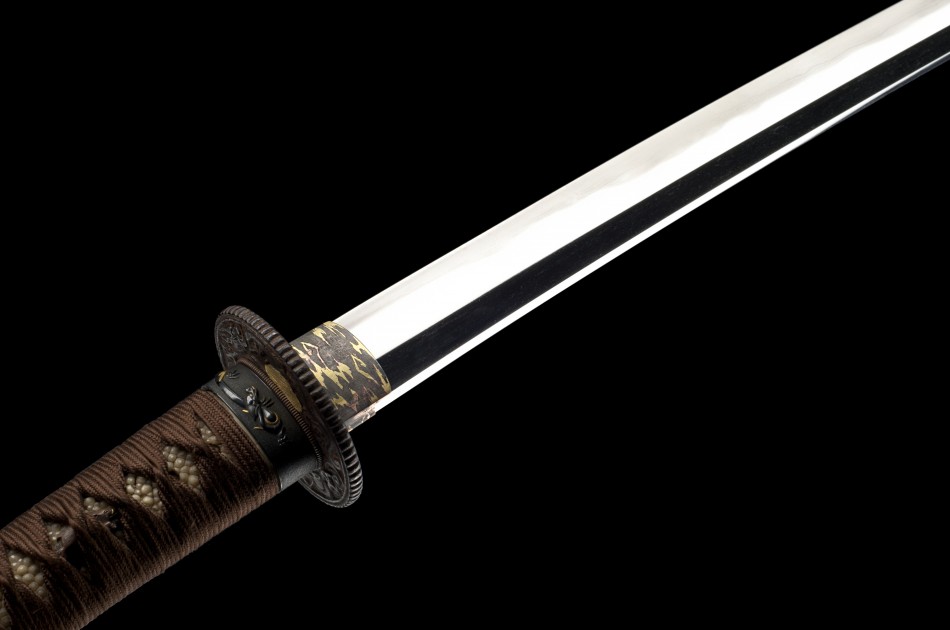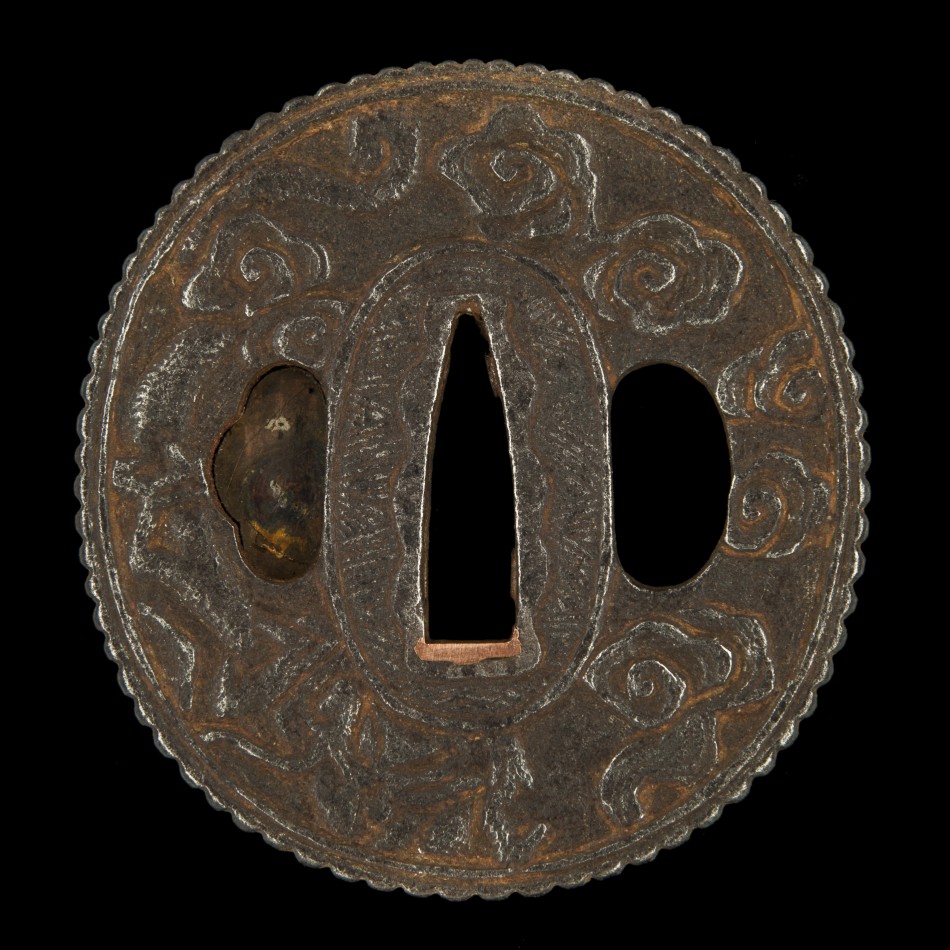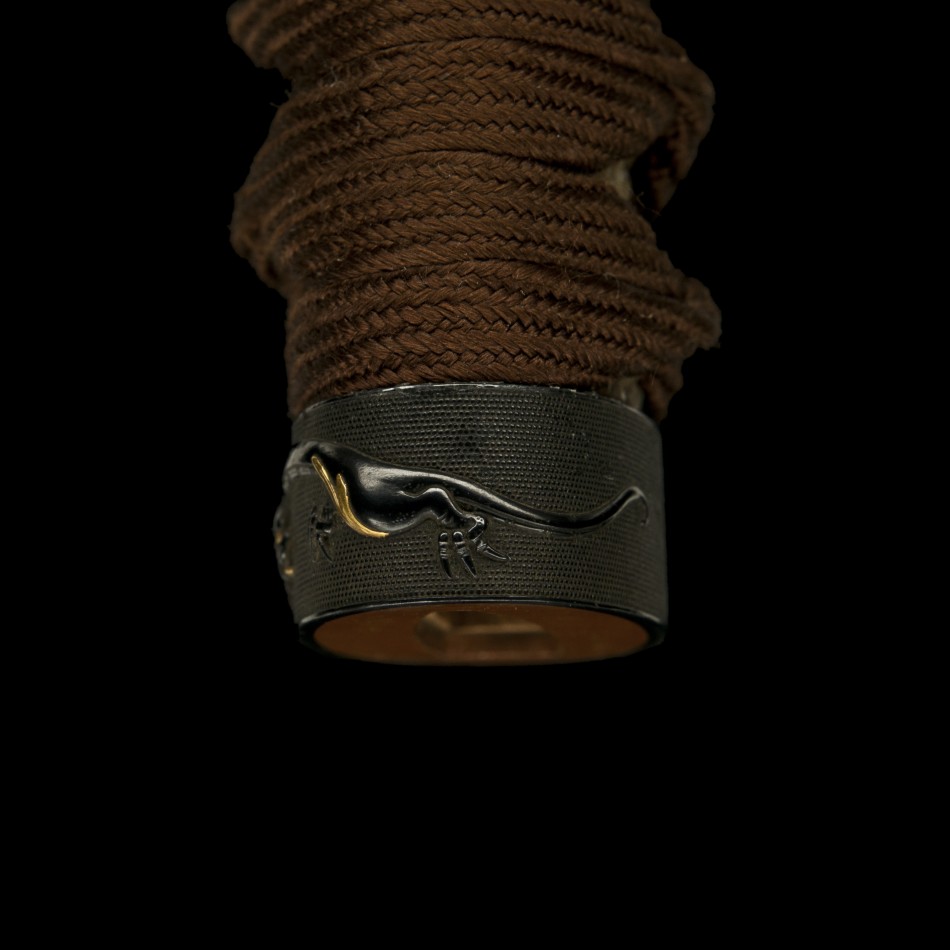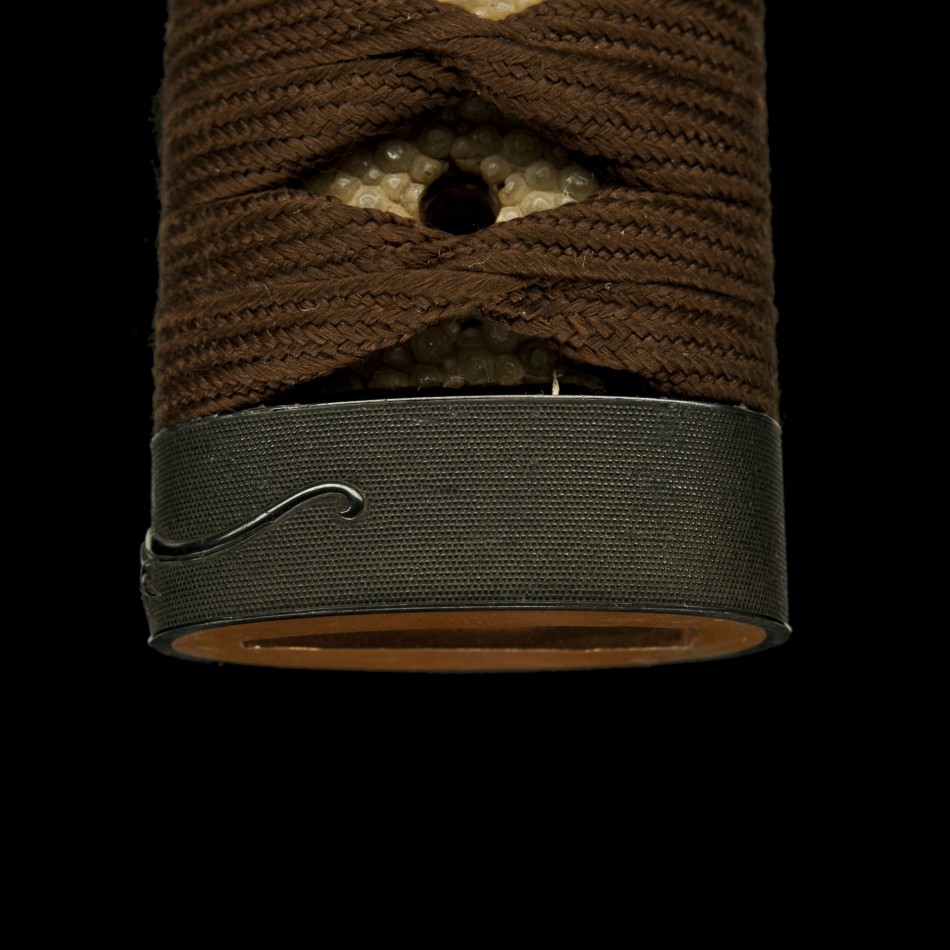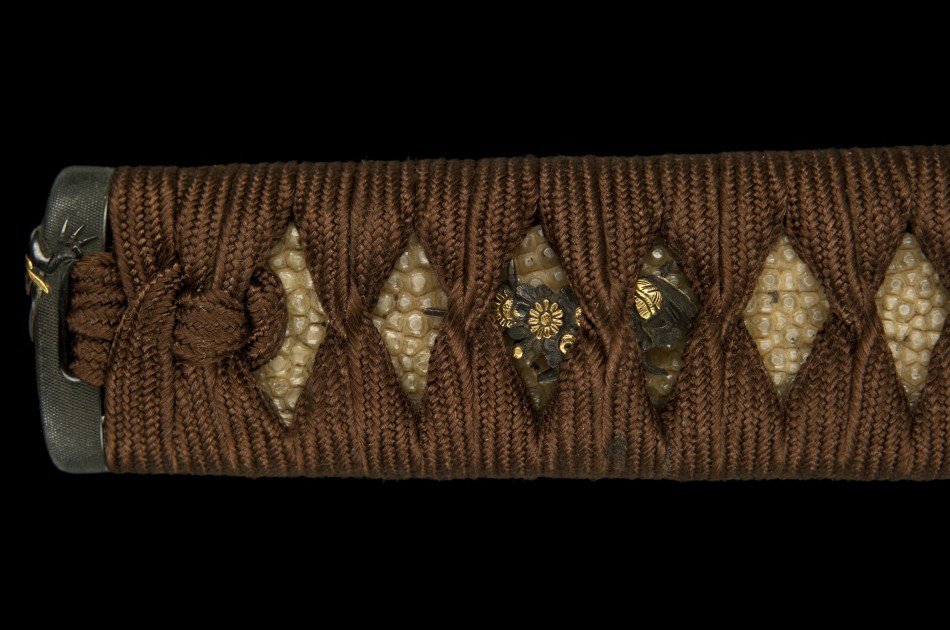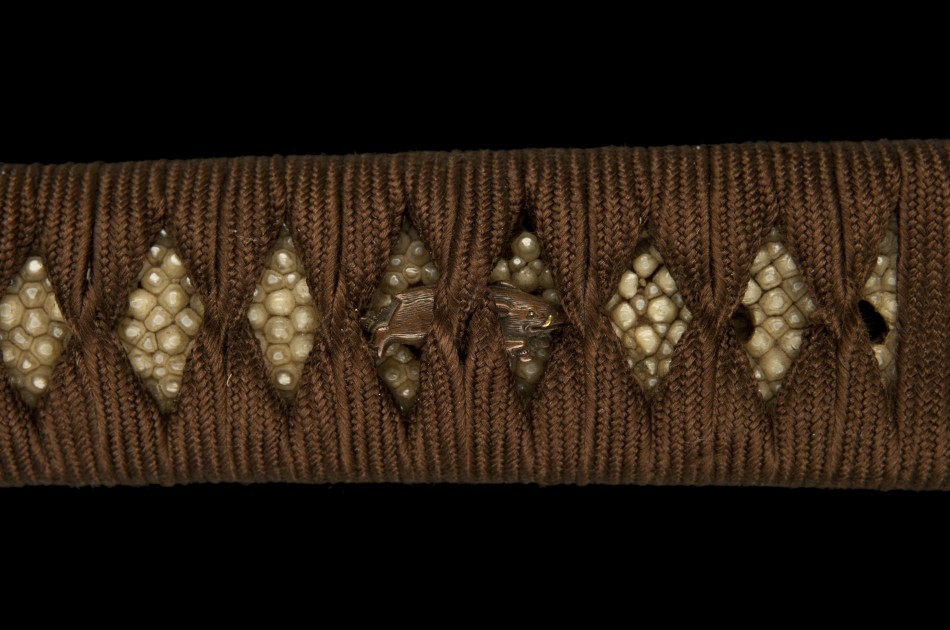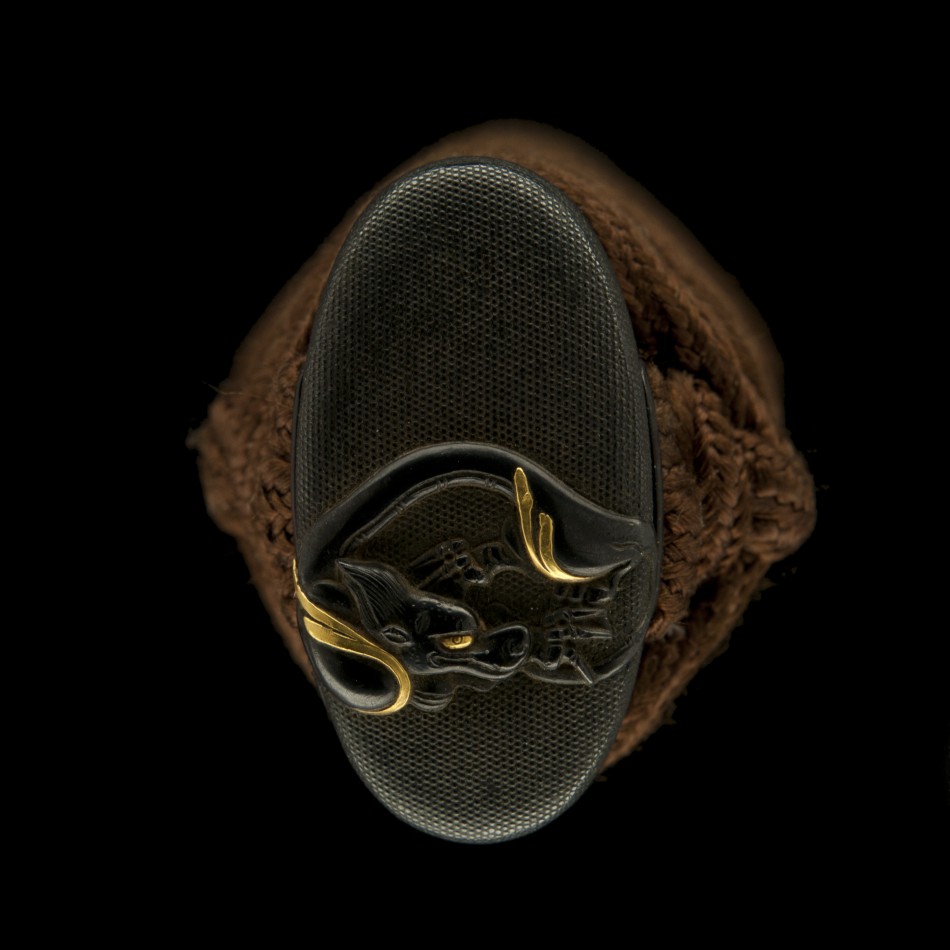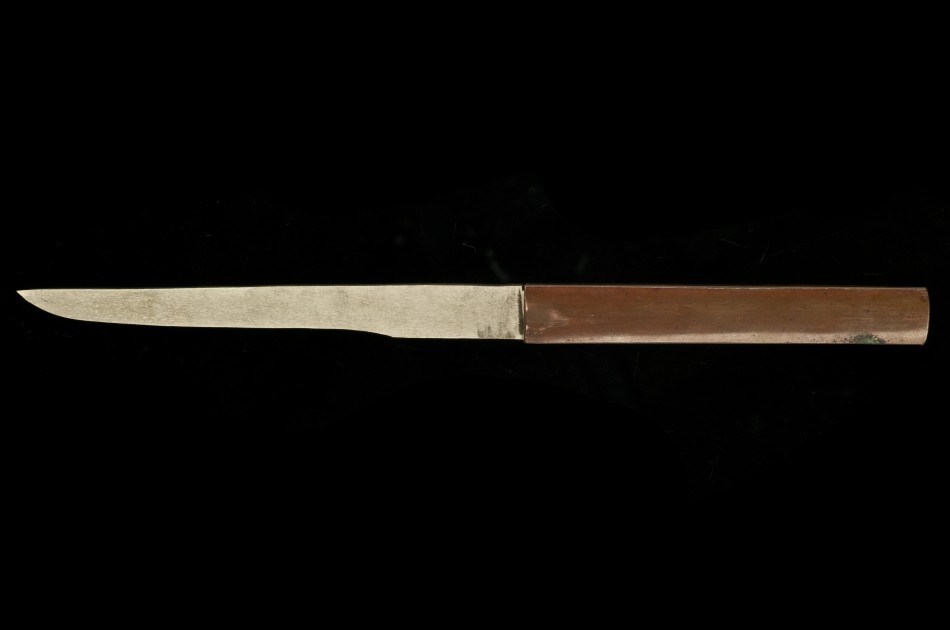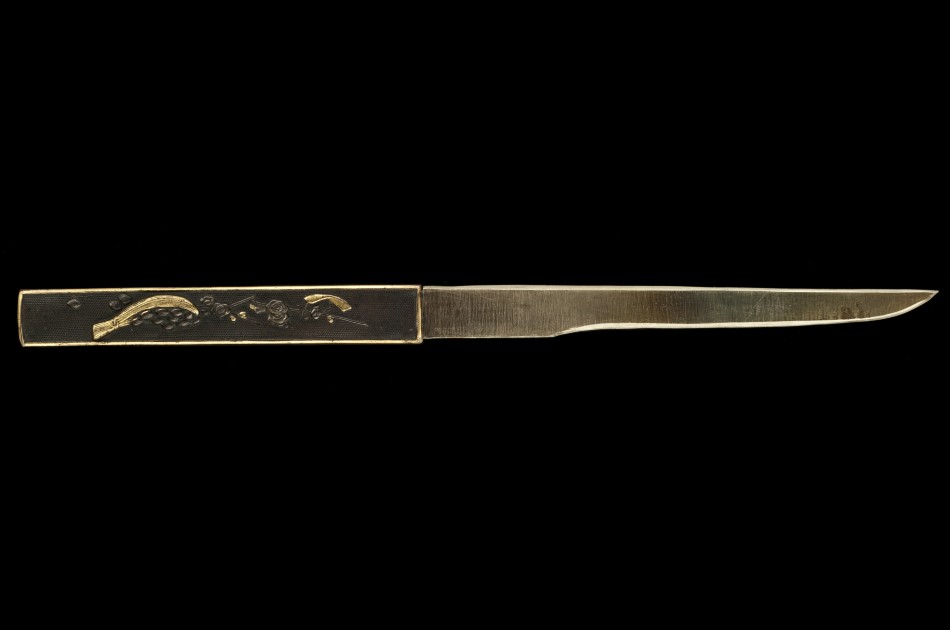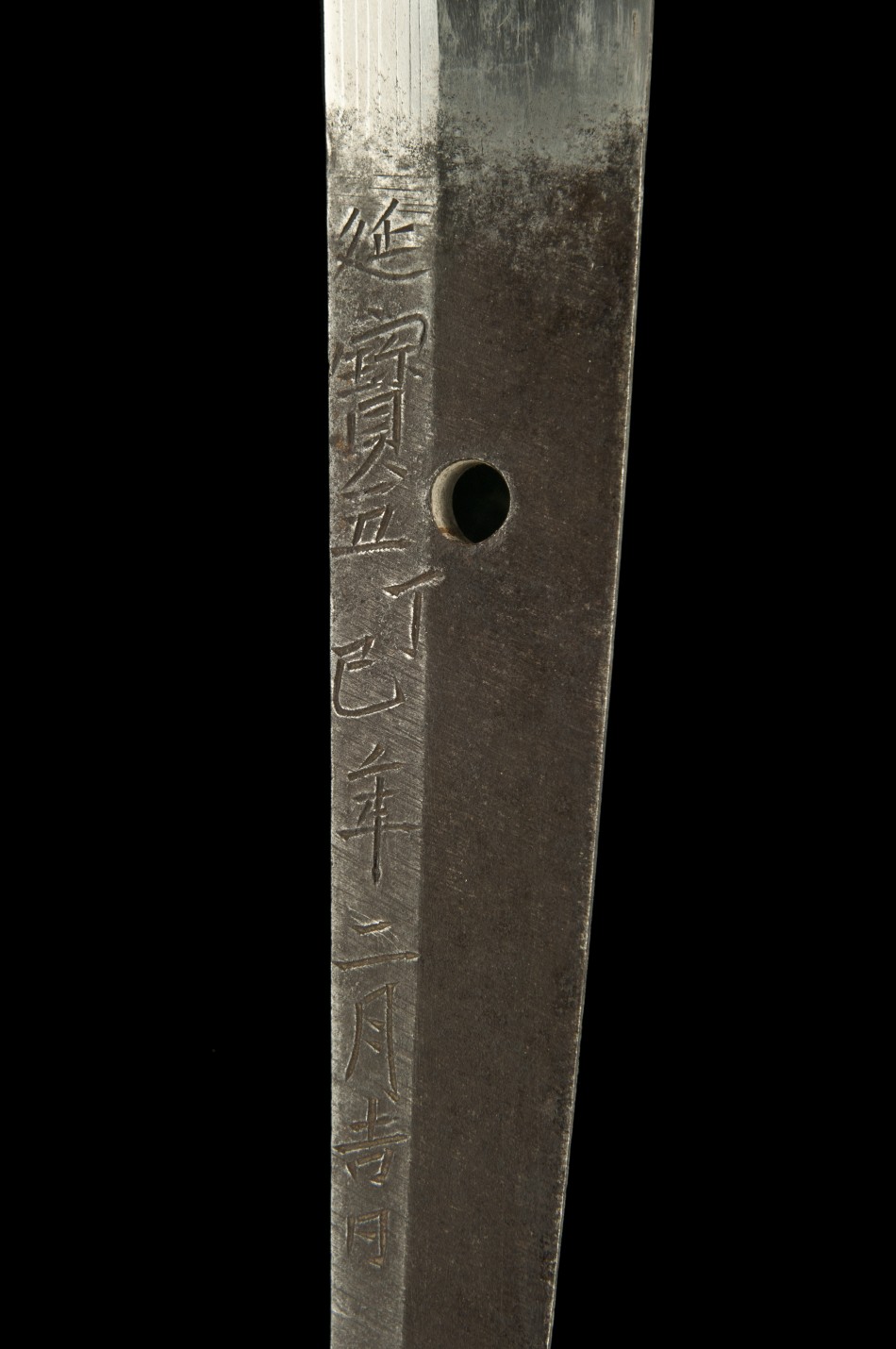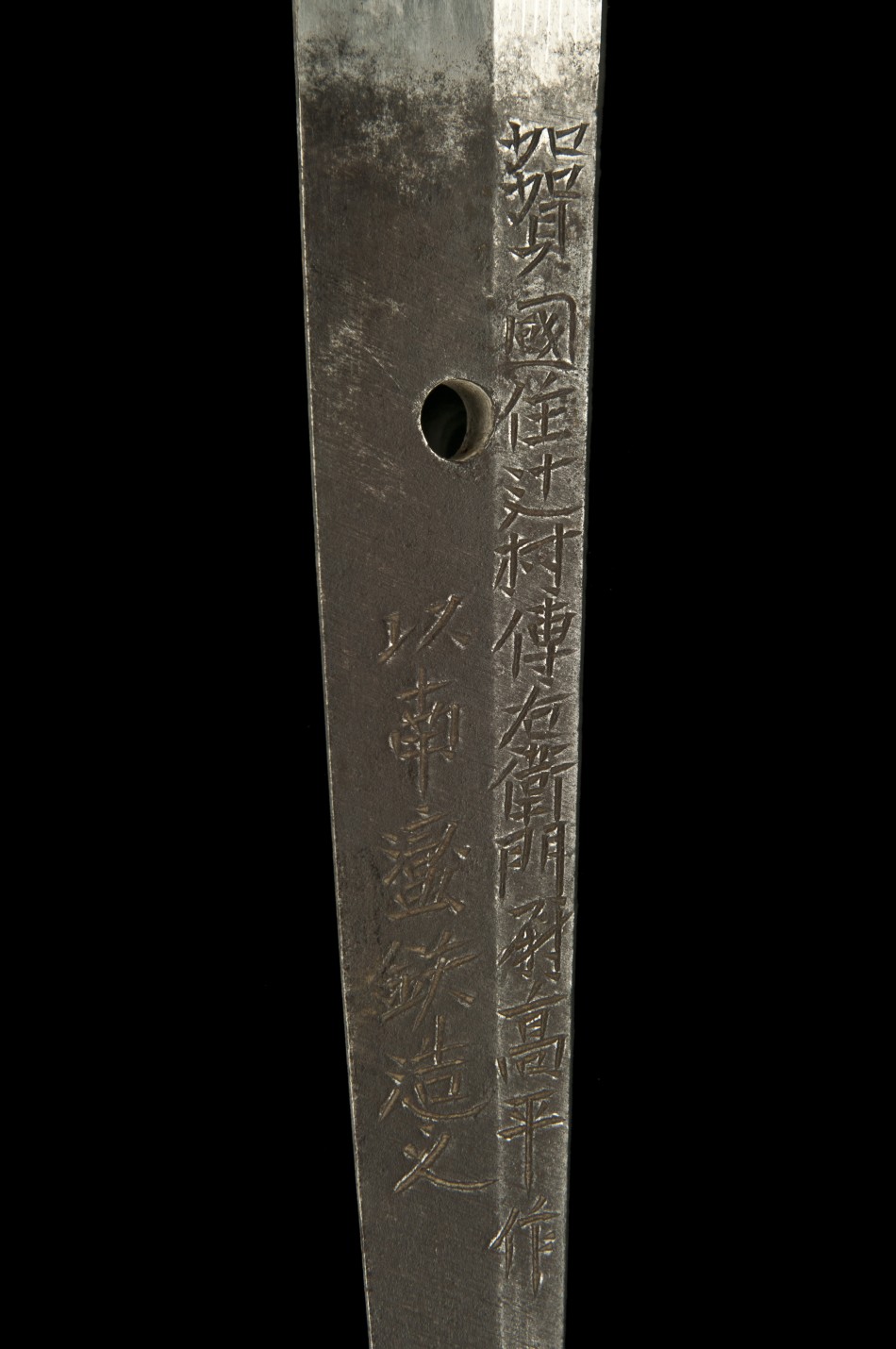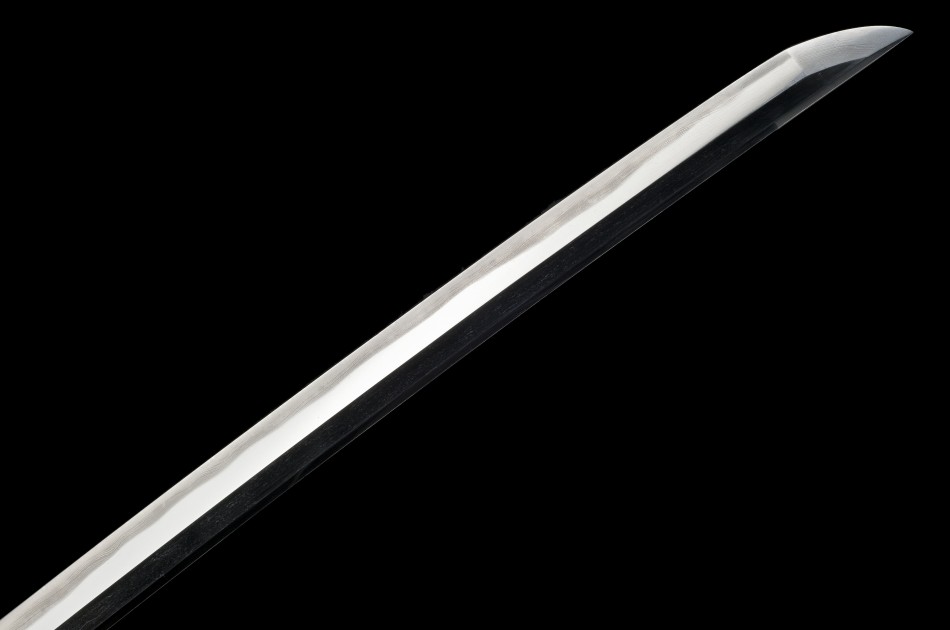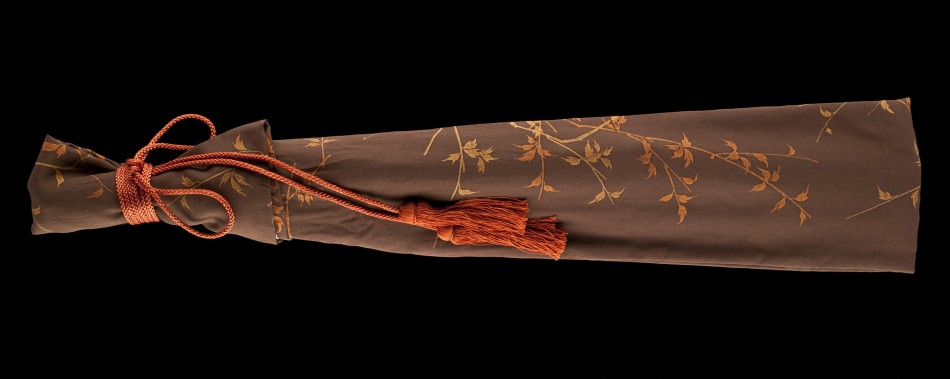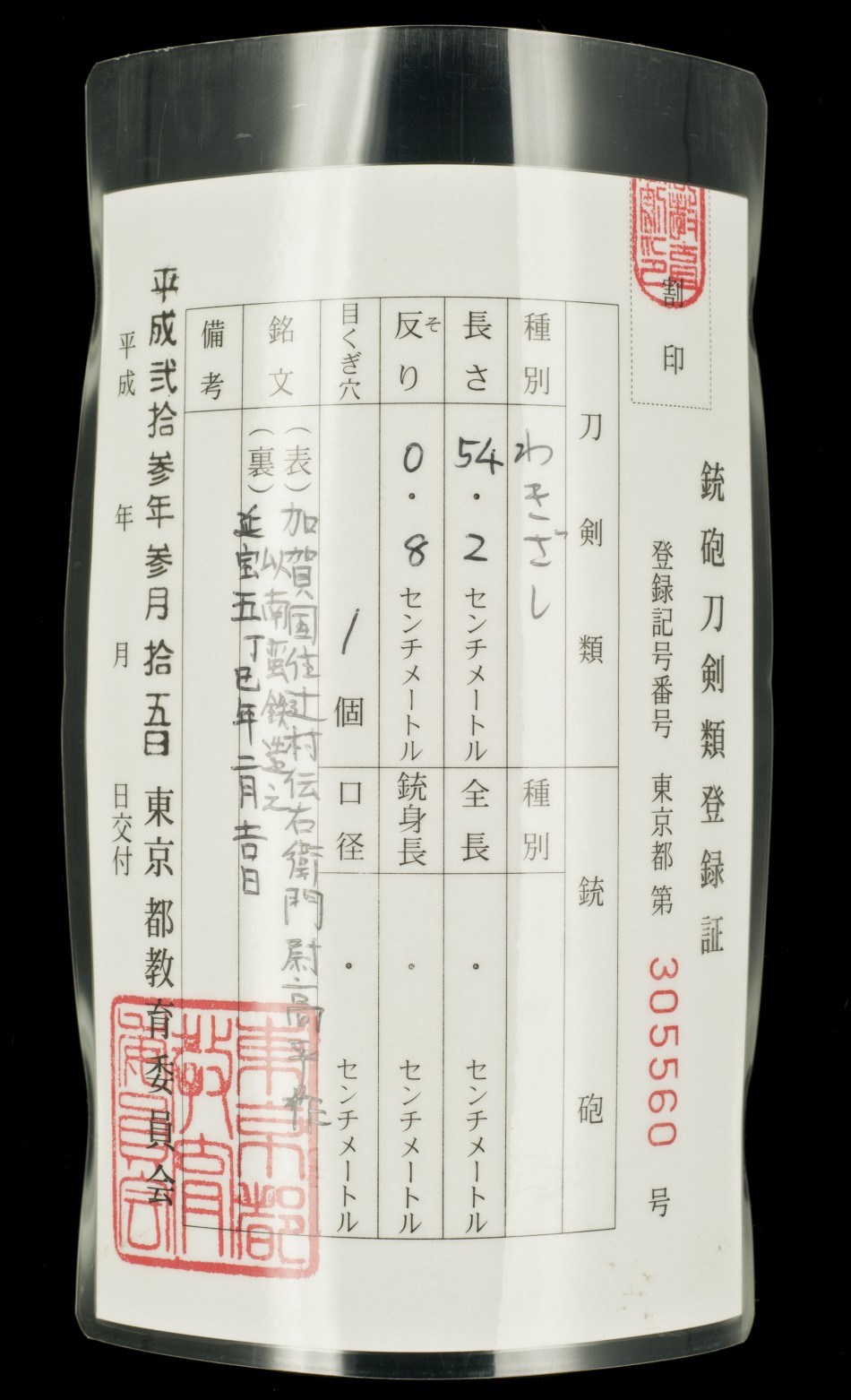This sword has been sold.

Overview (full text description follows photos)
Type: Wakizashi (signed AND dated)
Item No.: ujwa048
Swordsmith: Kaga no Kuni Takahira (2nd generation)
Mei characters (omote): 加賀国住辻村傳右衛門高平作 = Kaga no Kuni Ju Tsujimura Denuemon Takahira Saku (outside column)
The inside column 南蛮鉄造之 translates to mean “Namban Tetsu Tsukuri” (this sword was made in part using imported steel)
Dated: 延宝五年二月吉日 = 2nd month in the 5th year of Enpo (February, 1677)
Location: Kaga (Kanazawa prefecture)
Length: 54.2cm
Curvature: 0.8cm
Moto-haba: 3.0cm (width of the blade measured at the Habaki, collar of the blade)
Hamon: Gunome Midare (wavy temper line)
Jihada: Masame (straight grain temper line) with Mokume (tight wood grain swirls)
Koshirae: Edo-period koshirae mounting with a primary dragon theme
Fujishiro ranking: Jo-Saku (superior swordsmith)
Included: NBTHK Hozon certificate, koshirae (mountings), traditional katana carry bag, sword maintenance kit, illustrated maintenance guide, sword stand, full exportation support to send sword to home country
Photos (click for larger view)
*All photos taken professionally by
Eric Bossick for Unique Japan
A signed and dated blade by Kaga no Kuni Takahira 2nd generation
2nd month in the 5th year of Enpo (February, 1677)
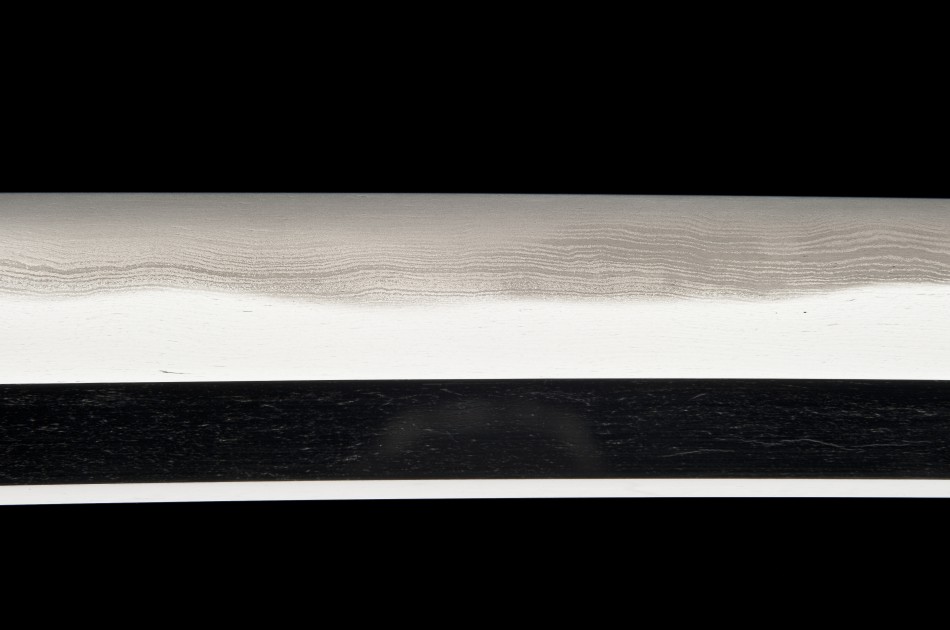
Above: A view of the beautiful masame jihada (straight wood grain body)
Fascinatingly this sword was in part made using imported steel from Portuguese or Spanish merchant ships. This would have been a rare and exotic achievement in the 17th century.
A most unique gold leaf habaki design pattern
Below: A complete Edo-period matching koshirae with a dragon theme
2012 is the “Year of the Dragon” giving the sword extra special significance
Above: A close look at the tsuba (guard) of the sword
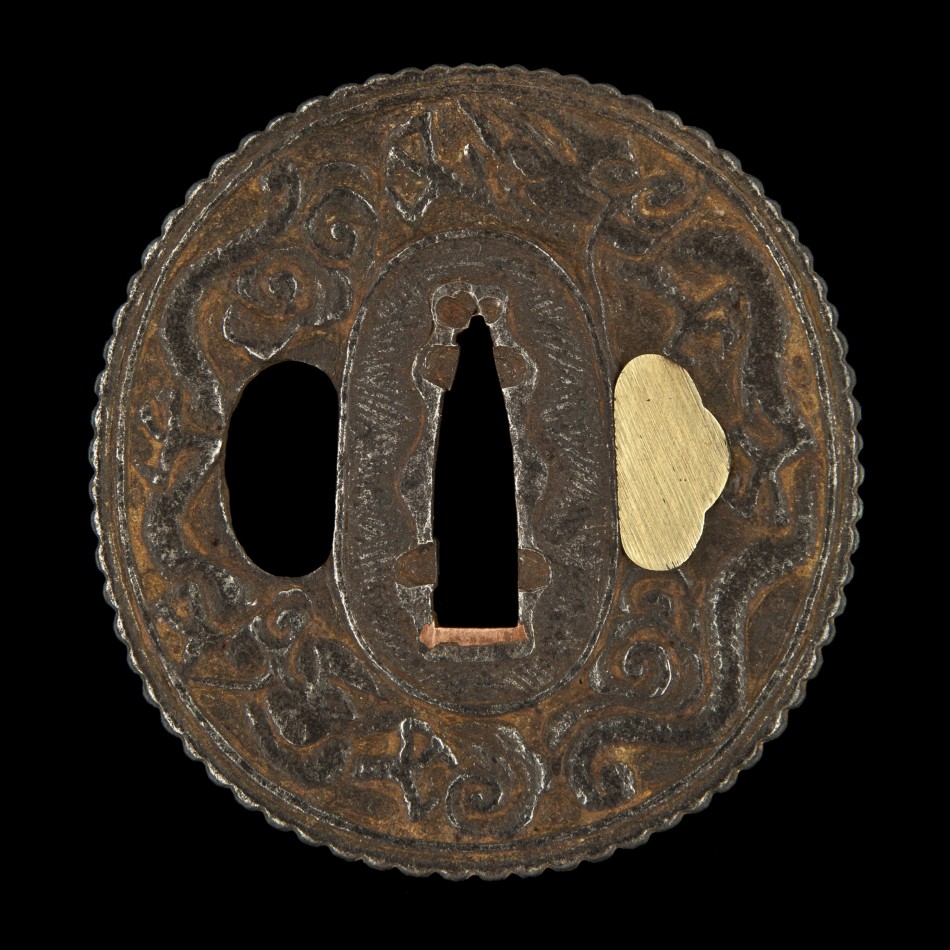
A fine tsuba (guard) with a 3-claw Japanese dragon theme
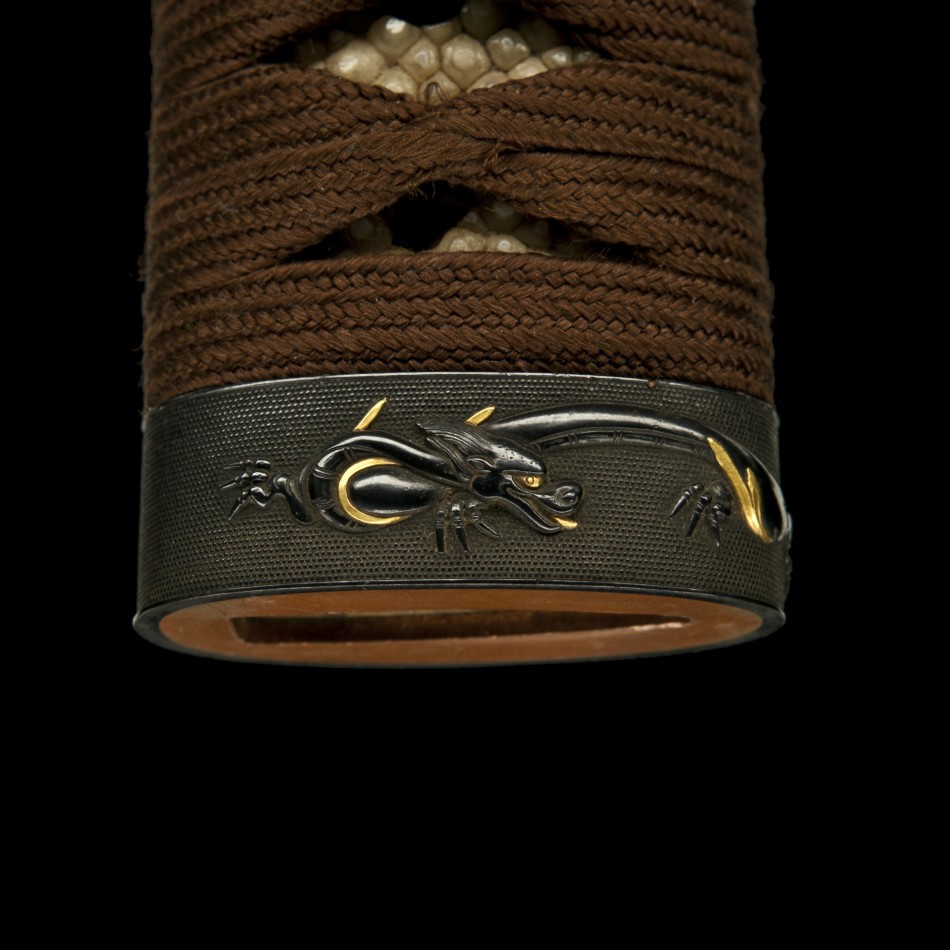
Take hold of one very special dragon fuchi (collar)
Note: Japanese dragons have 3 claws, Chinese dragons have 4
Above and below: The dragon slithers its way around the fuchi
Below: The menuki (ornamental grip) is an inoshishi (wild boar). This animal which is one of Japan’s 12 symbols of its yearly zodiac calendar that represents “direction with purpose”. Birth years of the Inoshishi include 1947, 1959, 1971, 1983, 1995, 2007
As the inoshishi charged, they charged with focus on a target or goal – never wavering. This moral correctness of Rectitude is a virtue the Samurai held close to their heart.
Above: A close look at the cleverly crafted dragon on the kashira (pommel) of the sword
Above and below: The Samurai’s trusted and decorated kozuka (utility knife)
Above: 2nd month in the 5th year of Enpo (February, 1677)
Below: Kaga no Kuni Ju Tsujimura Denuemon Takahira Saku (outside longer column)
The inside kanji (南蛮鉄造之) reads “Namban Tetsu Tsukuri” (made using imported steel)
Below: A closer look at the hamon (temper line)
Below: The elegant silk bag for the sword with gold leaves representing health and longevity
Above: This sword is certified NBTHK Hozon (worthy of conservation)
Below: The sword’s torokusho (registration card)
Description:
Born in the 2nd of Keian (1649) Tsujimura Denuemon, Takahira II was an extremely talented swordsmith.
He was the second son of sword making giants Matasuke Kanewaka and the great grandson of Etchu no Kami Takahira.
He received the honorary title of Dewa Daijo in the first of Enpou (1673) and in the second of Enpou (1674), he changed his name to Dewa no Kami, which this sword is signed as.
Unfortunately, Takahira’s celebrated career as a swordsmith was short lived producing his last sword at the age of 46 in the 9th year of Genroku (August, 1697).
This is one of very few swords signed with his full name (Tsujimura Denuemon Takahira).
A fascinating aspect of this sword is that it was made using Nanban tetsu, or “foreign steel”. Nanban tetsu is steel which was imported into Japan by Portuguese or Spanish merchant ships in the end of Muromachi period (1392-1573). The steel was produced in India and called “Wootz steel”.
“I made a personal visit to the respected NBTHK museum in Yoyogi and showed one of the curators this particular Takahira wakizashi. You could tell that curators don’t often get ‘too excited’ about Japanese swords as they have literally seen them all…
I have to say though that he was rather impressed with the fact that this sword was signed with “Nanban tetsu” (foreign-made steel).
The curator explained to me that the museum has performed metallurgical tests on swords with Nanban tetsu in the past. And what they discovered is that a relatively small percentage of the actual steel is “foreign steel”.
Think of it as a special mixture, delivering unique results that hold a rare and admirable artistic characteristics. It would have been far too expensive to forge using only Nanban tetsu, plus the results would likely not be as desirable as when forging with primarily Japanese iron.”
In 1613, celebrated Japanese swordsmith, Shodai Echizen Yasutsugu, first produced a sword using Nanban tetsu with lovely results. Some swordsmiths from Kaga, a neighboring province to Echizen, also adapted to forging swords with nanban tetsu.
One interesting result from using the steel is that certain types of artistic hamon (temper line) patterns such as Sukehiro’s toran-ba (ocean waves) is said to be better produced with Nanban tetsu.
This is a valuable Samurai sword that I was very proud to offer.
PKInterested in Ownership of an Antique Japanese Sword?
If owning an authentic Japanese Samurai sword is of interest to you and your family, we would be honoured to serve you.
To visitors in Japan…
If you have the pleasure of living in Japan or visiting the country, we recommend that you come to one of our upcoming
sword shows or schedule a
private VIP meeting with us.
VIP meetings are normally held near JR Ebisu station in Tokyo at a hired gallery space. We can also arrange visits to a company office, hotel, near the airport or at a private residence.
To visitors around the world…
To those exploring our collection online, be sure to
download our catalogue of available swords here. We completely respect the fact it takes a HUGE leap of personal FAITH in us to commit to a particular sword given the reliance on photos and descriptions for such a highly valued item.
It is our PROMISE to
address all your questions to the best of our ability. It’s important to us that you feel completely confident that the sword you choose (and that chooses
you) is destined for you and your family.
You can also take reassurance that ALL swords from Unique Japan are GUARANTEED AUTHENTIC and come with a 3-DAY WORRY FREE inspection period upon arrival to your home.
Legal Exportation from Japan
Yes, it is completely legal to own a genuine antique Japanese sword (even those that are several hundreds of years old). Unique Japan specialises in all proper legal compliances so that swords can be exported from Japan.
All required paperwork is provided free of charge for clients.
Unique Japan has safely sent well over 300 swords FROM Japan to immensely proud owners in the United States, Canada, Europe and around the world.
We look forward to making your dream of owning an authentic Japanese sword a reality for you.
Popular Pages of Interest







